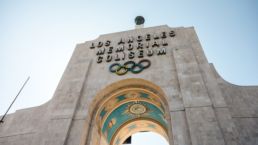With Paris 2024 behind us, each Olympic sport enters a critical four-year phase leading to Los Angeles 2028. This period isn’t just about preparing for the next Games; it’s an opportunity to strengthen brand identity, attract new fans, and build commercial appeal.
Success at LA28 depends on each sport’s ability to define and communicate what makes it different, and to reach new audiences to guarantee sustainable growth.
Meaningful differentiation & generation of future demand
For Olympic sports to thrive, they must stand out in ways that go beyond medals and records. They need to emphasise the attributes and characteristics that make them relevant to people’s lives (which will probably be different for each audience segment), and position them against other sports and entertainment properties.
Let’s take canoeing as an example. While competitive slalom canoeing has a small fan base, canoeing appeals to a much broader audience – one that enjoys nature, outdoor adventure and family trips. By positioning itself as a gateway to adventure, canoeing can attract participants who may not watch elite events but who enjoy recreational paddling. The ICF’s ‘Fit for Future’ strategy, for instance, includes the rebranding and repositioning of ICF as Paddle Worldwide.
Equestrian sports offer another example. Many people are drawn to the lifestyle aspects of equestrianism – riding as a way of life, connecting with nature or enjoying cultural traditions – rather than concentrating on competition. Highlighting the bond between humans and horses (see A Bond Like No Other) and the elegance of equestrian culture, the sport can appeal to lifestyle-focused audiences beyond elite events.
Sports like canoeing and equestrianism can therefore focus on their unique qualities to build identities that connect with people’s values and lifestyles. This will create new category entry points rather than relying on the competitive aspects that attract only niche audiences.
The role of International Federations is to guide these new audiences on a journey – from engaging with the lifestyle and recreational side of the sport to discovering and becoming invested in its competitive events – ultimately building excitement in the lead-up to LA28.
New audiences add long-term value, increasing a sport’s relevance and appeal to sponsors. Commercial partners are more likely to invest in sports that have strong, lifestyle-driven fan bases, where sponsorship rights provide brand awareness via recognition at major events (and associated broadcast images) and meaningful interactions with audiences (via activations) that are passionate about the unique attributes and characteristics of the sport, creating a virtuous cycle that fuels growth. The FEI and headline sponsor Longines provide an excellent example.
The power of consistency
Once a sport has defined its unique appeal, consistent communications over the four-year cycle is essential. Brand-building takes time, and regular, cohesive messaging helps audiences recognise and feel connected to a sport’s identity. Many sports, however, undermine this potential by frequently shifting their messaging with each new event or competition series, disrupting audience engagement and diluting brand impact.
Consistency creates familiarity which in turn boosts marketing effectiveness. When every campaign reinforces the sport’s identity, audiences feel part of a shared journey rather than occasional spectators.
This approach not only broadens viewership but strengthens the sport’s commercial potential by engaging invested communities.
The pressure for immediate results
In the fast-paced world of sports, executives and sports leaders face immense pressure to deliver quick wins, leading to an intense focus on achieving immediate results. Sports organisations often prioritise short-term gains from any upcoming event by focusing on ticket sales, viewership or instant sponsorship returns. But relying solely on such quick wins can trap sports in a cycle that delivers limited long-term growth.
Research by the Institute of Practitioners in Advertising (IPA) suggests that campaigns with a balanced focus on brand-building and sales activation achieve up to twice the return on marketing investment compared to those that focus on sales activation alone.
By investing in brand-building activities alongside event-driven campaigns, sports can create a foundation for sustainable impact. Brand communications – when presented consistently– build audience familiarity and trust, making each short-term event and activation resonate more deeply.
This approach amplifies instantaneous results and builds a lasting brand presence that can yield stronger returns from future events.
The two strategies outlined above work hand-in-hand: brand-building elevates short-term gains … short-term campaigns reinforce the sport’s identity. Together, they create a cycle of growth that will place each sport in a better position to achieve success at LA28.
Preparing for success at LA28
The path to LA28 is an opportunity for every sport to build a legacy. Those that prioritise meaningful differentiation, consistent messaging and the generation of future demand will arrive in Los Angeles with brands that are stronger, appeal that is broader, and greater commercial potential.
Ultimately, the sports that resonate most at LA28 will have spent the previous four years cultivating a unique identity, connecting into specific cultures to attract new fans, and building brand equity.
Action taken now to identify meaningful difference and how this translates into brand communications will ensure your sport is ready to captivate audiences at the Games and is also positioned for lasting growth and commercial success well beyond the Olympic spotlight.
Four takeaways
1. Define your sport’s unique value
Invest in discovering and clearly articulating what makes your sport meaningfully different. Focus on lifestyle attributes, cultural significance, or unique experiences that resonate beyond competition.
2. Create a brand playbook
Develop a comprehensive playbook that establishes a clear framework for bringing your sport’s unique qualities to life through consistent communications. The playbook should guide messaging, visuals and engagement strategies across all platforms.
3. Maintain consistent communications
Use the same brand messaging throughout the four-year cycle prior to LA28. Repeatedly reinforce your sport’s unique identity to create a sense of familiarity and loyalty among audiences.
4. Balance the generation of long-term demand with immediate results
While short-term activations and results are vital, allocate resources to long-term brand-building to generate sustained demand.
To find out how we can help get in touch with Jonny Murch
Jonny Murch
Family-man and entrepreneur. Loves a BBQ on the beach with friends (whatever the weather) as much as running across the North Downs (whatever the weather) with Meggie (my dog) by my side.
My most memorable sporting moment is …
Spectating: the 2003 Rugby World Cup final, watching Jonny Wilkinson’s drop goal sail through the posts, made better through watching it in the Walkabout bar in Covent Garden.
Participating: lining up for Auckland University Colts in my first game in New Zealand back in 1997. It was one of those moments where you step up and be counted or get stepped on. Thankfully I chose the former.
I am happiest when ...
On skis – water or snow – doesn’t matter. Ideally with my family in tow.
The sports person that best represent me is …
Richard Hill (former England Rugby No. 6) – nothing flash, quietly going about his business delivering high performance and inspiring those around him.
The three things at the top of my bucket list are …
1. Visit Mount Everest basecamp
2. To windsurf after work every day in the Summer
3. Learn how to play the Ukulele
A quote I try to live my life by is ...
"Champions do extra."





